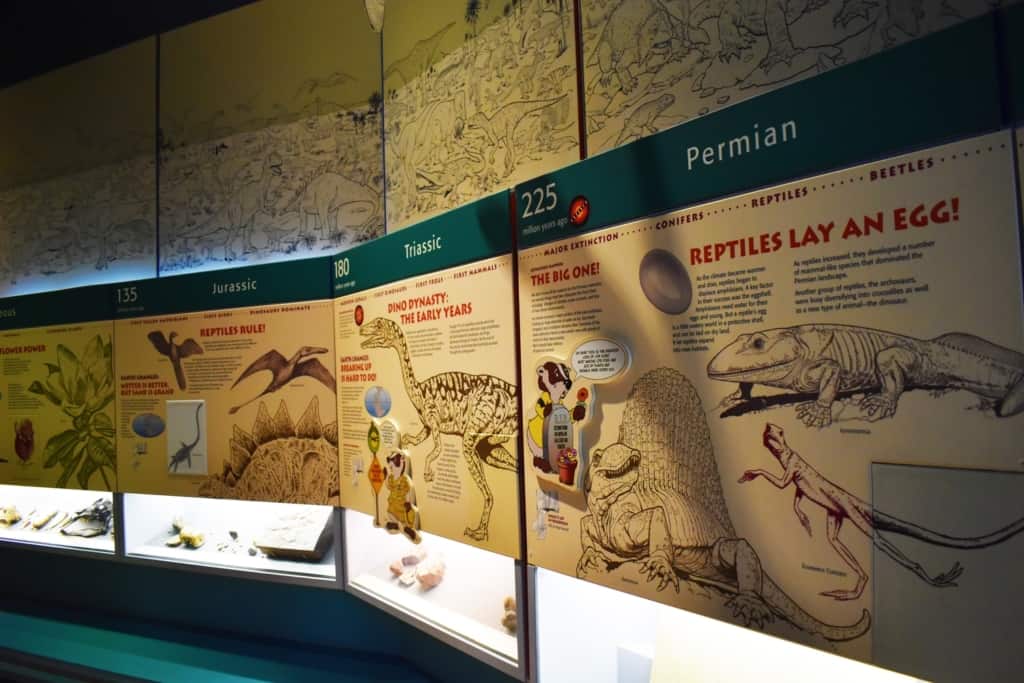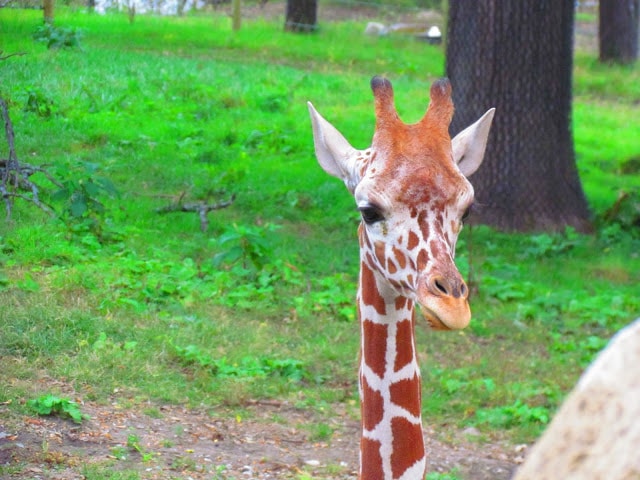The shores of Lake Michigan make the perfect destination for some summer time exploring. Our 2019 travels included a visit to Kenosha, Wisconsin. This Upper Midwest city offers visitors a simple to navigate downtown that we found quite easy to walk. Museum lovers, like us, will find plenty of sites to explore, and a bonus that they are low cost or even FREE. We chose one of our mornings for traveling through time at two of Kenosha’s history museums. Both of these are part of a trio of FREE museums, with the third being the Kenosha History Center. (You can read about that museum here.)
We want to thank Visit Kenosha and the Kenosha museums for their hospitality. Rest assured that all opinions are our own.

Traveling Through Time
Being so close to the lake, the land is relatively flat, so walking is a breeze. Most of our travels, in Kenosha were done by this method. As we were walking, we saw one of the city’s restored streetcars pass by. We knew immediately that we had to hop a ride on one. With a low $1 per ride cost, ($3.50 for all day pass) it’s an affordable way to see the downtown from a different perspective. The beautifully restored electric cars travel on a 2-mile loop that runs from the lake shore to the train station. We loved the nostalgic feel, and it is a popular attraction with kids, as well.

We started off at the Dinosaur Discovery Center, which offers an interesting perspective. This museum may not be huge, but it has a nice collection of specimens. The focus of the exhibits is exploring the connection between dinosaurs and birds. When viewing the skeletons of large predators, like the T-Rex, it can be easy to forget the connection to the winged creatures we see all around us today. While our scheduled time was limited at this location, I was not passing up an opportunity to capture plenty of images from this place. Now that we had a small taste of dinosaurs, we were eager for more. Time to move closer to Lake Michigan.

The Earliest Days
Once we reached the Kenosha Public Museum, it was time to get down to more discovery. Here we would have a chance to learn the historical background of this Upper Midwest city, and the surrounding region. As we passed through the time line of prehistoric history in Michigan, we learned about the changing landscape. Long ago the land was covered in water, as part of a huge seabed. This wasn’t limited to Michigan, as it was actually most of North America. Strange creatures patrolled the murky depths, seeking prey for sustenance. Fossils even show that there were coral reefs located in the Upper Peninsula of Michigan.

Putting Some Skin on Them Bones
As the waters receded, dry land became more abundant. Millions of years passed, but the days of the dinosaur finally dawned. While there are few dinosaur remains found in this area, it is almost a certainty that they patrolled the land looking for food. Traveling through time, with the aid of the exhibits, showed us how the ever changing landscape became what we see today. We enjoyed the addition of a few dinosaur models, that showed what they may have looked like with skin. Sometimes it can be difficult to imagine the finer details of these mysterious creatures by only seeing their skeletons.

Changing Landscape
Moving through the museum, we started traveling through time again. Our next stop brought us to the Ice Age, where glaciers covered the upper portion of North America. Over thousands of years, these glaciers advanced and retreated, carving out the spaces that would become the Great Lakes. When we looked out over the shore of Lake Michigan, it was hard to imagine an ice sheet so large that it covered farther than the eyes could see. Of course, the glaciers also created some unique landscape features, by dragging boulders and debris along their path.

Hunting Mammoths
Continuing forward in time, we came to the period where humans were inhabiting the lands in and around modern day Kenosha. A key discovery, in 1964, was made in a nearby farm. Portions of a tusk and hip bone, from a Woolly Mammoth, would eventually lead to uncovering even more. It wasn’t until the early 1990s, that the real importance was made about this discovery. Small marks on the hip bone suggested the use of tools. After an in-depth excavation of the original site, a nearly complete skeleton was uncovered. The scientists had uncovered the oldest known mammoth that was butchered by humans west of the Mississippi River.

Living Off the Land
The next series of exhibits had us traveling through time to the point where many of the native American tribes had established semi-permanent homes in the region. A combination of farming, fishing, and hunting provided the food for these communities. It was the Potawatomi tribe that originally named the are Kenozia, which means “place of the pike”. The nearby rivers were home to thousands of fish that migrated upstream from Lake Michigan. This ever-flowing supply of food attracted the attention of the early trappers, as well.

Bringing the Past to Life
An old path existed between what is now Chicago and Green bay. Known to the native tribes as the Jambeau Trail, it was formed by the receding glaciers. Used by the natives, as well as trappers and traders, it was named for the French settler, Jaques Vieres. He established a trading post at nearby Skunk Grove, which served the inhabitants of the region. The Kenosha Public Museum even has a small trading post located inside of the museum. Here we could see some merchandise that would have been found in those days. As interest in the area escalated, settlers began arriving from the east. By 1833, the majority of the Native Indian tribes had ceded their lands and moved west.

Back to the Present
We wrapped up our explorations on the first floor and made our way upstairs. Here we discovered exhibits that focused on the world as it exists today. A series of displays allow guests to explore the six localized ecosystems, that mimic those found around the globe. This area includes some interesting interactive exhibits. Visitors can play games designed to see how animals and humans find food and water. Videos show scientists doing in-field research. We also saw short videos that explain how we could make a positive impact on our planet.

Loving the Low Cost Attractions
We were enjoying exploring Kenosha, Wisconsin and its assortment of low cost entertaining attractions. In one afternoon, we were able to visit two free museums, as well as take a ride on a historic streetcar. There was still time for us to stroll along the art-lined walkway that runs along the lakefront. All of these options are enjoyable for all ages, so perfect for a family vacation. With the sound of gulls squawking in the background, we paused for a quick selfie in front of the museum. Our time in Kenosha was showing us that Wisconsin would clearly need to be explored in greater detail. For now, we were happy soaking up this lake city’s atmosphere. How many of you are dino-fans?





